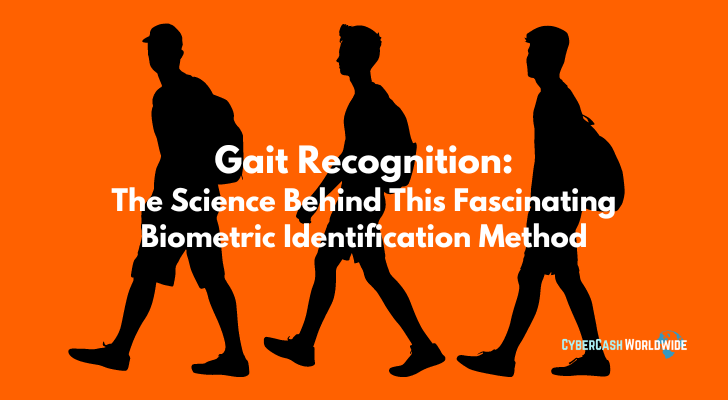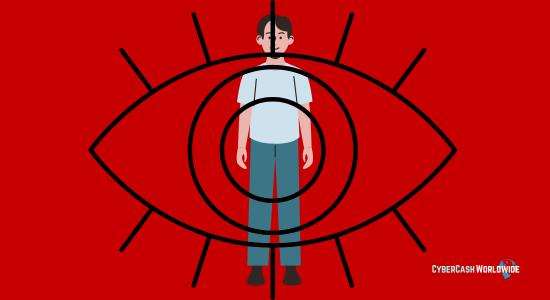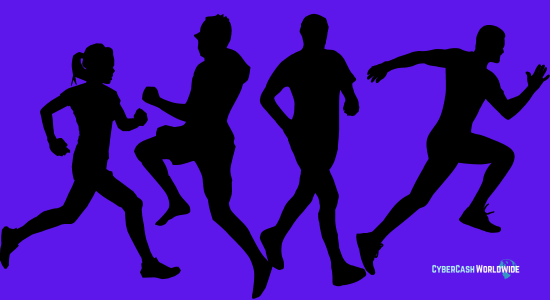Have you ever watched spy movies where the hero walks into a high-security facility and is immediately identified by the way they walk? Well, that futuristic technology is now a reality with gait recognition! This amazing biometric identification method uses an individual's unique walking pattern to identify them, making it almost impossible for imposters to gain access.

What is Gait Recognition?
Gait, or the manner of walking, is a type of biometric information that can be used for human identification. Unlike other biometrics, such as fingerprint or iris recognition, gait can be observed from a distance and does not require close contact or direct line-of-sight to the subject. For these reasons, gait has been identified as a promising modality for non-cooperative biometric identification, particularly in security applications.
The basic principle behind gait recognition is that each individual has a unique way of walking that is relatively consistent over time. By analyzing an individual's gait, it is possible to create a profile that can be used for identification. While this concept may seem straightforward, the challenge lies in developing algorithms that can accurately extract and represent the relevant information from an image or video of someone walking.
Did You Know?
- Accuracy Levels: Gait recognition systems can achieve over 90% accuracy under controlled conditions.
- Distance Factor: Effective at distances up to 50 meters, making it useful for surveillance without close contact.
- Speed Variation: These systems can correctly identify individuals walking at different speeds, with a slight decrease in accuracy as speed increases or decreases from the normal walking pace.
- Lighting Conditions: Performance can degrade in low light conditions, but advancements in infrared and other technologies are improving accuracy.
- Injury or Impairment: An individual's gait can change due to injury or impairment, affecting identification accuracy temporarily.
There are two main approaches to gait recognition: model-based and appearance-based;
Model-Based
In model-based methods, a mathematical model is used to describe the relationship between an individual's body shape and gait. This approach requires accurate measurements of the subject's body dimensions, which can be difficult to obtain in practice.
Appearance-Based
In appearance-based methods, local features are extracted from images or videos of the subject walking and used to create a gait signature. This signature can then be compared against a database of known individuals to perform identification.
While research on gait recognition has been ongoing for several decades, the technology is still in its infancy and has yet to be widely adopted. However, recent advances in computer vision and machine learning have improved recognition accuracy and led to growing interest in the potential applications of gait recognition.

The Science Behind Gait Recognition
The science behind gait recognition is based on the principle that each person has a unique way of walking, which is reflected in their gait pattern. This gait pattern can be used to identify an individual, even when they are trying to disguise their identity.
When an individual walks, they exhibit a unique pattern of movement that is determined by a variety of factors, including their height, weight, stride length, and the distribution of their body weight. This pattern can be captured and analyzed using a variety of sensors, including cameras, pressure sensors, and accelerometers.
The process of gait recognition typically involves the following steps:
- Data collection: The individual's walking pattern is captured using sensors, which record information about their stride length, walking speed, and other parameters.
- Feature extraction: The data collected from the sensors is then processed to extract specific features that are characteristic of the individual's gait. These features may include the length of their stride, the angle of their foot as it strikes the ground, and the amount of time each foot spends on the ground.
- Signature creation: The features extracted from the data are combined to create a unique signature that represents the individual's walking pattern. This signature can be stored and used for identification purposes.
- Matching: When an individual needs to be identified, their walking pattern is captured using sensors and the resulting signature is compared to the signatures stored in a database. If there is a match, the individual's identity is verified.
The science behind gait recognition is complex and involves a variety of disciplines, including biomechanics, computer vision, and machine learning. As the technology continues to develop, we can expect to see even more accurate and sophisticated gait recognition systems in the future. We will see more widespread adoption of gait recognition systems in a variety of settings.
Did You Know?
- Clothing Effects: Heavy or baggy clothing can reduce recognition accuracy, although algorithms are improving in accounting for such variables.
- Market Growth: The global market for gait analysis is projected to grow significantly, reaching over $200 million by 2025.
- Healthcare Applications: In healthcare, gait analysis is used for diagnosing conditions like Parkinson’s disease with a high degree of accuracy.
- Security Applications: Used in security and surveillance, gait recognition is implemented in airports and high-security areas for passive monitoring.
- Comparison with Other Biometrics: Gait recognition is considered less intrusive than facial recognition and can be done at a distance without consent.
Biometric Technology Examples
Biometric technology refers to the use of unique biological characteristics or traits to identify and verify individuals. Some common examples of biometric technology include:
- Fingerprint recognition: This technology uses unique ridges and patterns on a person's fingertips to identify them.
- Face recognition: Facial features, such as the distance between the eyes or the shape of the jawline, to identify individuals.
- Iris recognition: The unique patterns of the iris to identify individuals.
- Voice recognition: The unique characteristics of a person's voice, such as pitch, tone, and speech patterns, to identify them.
- Retina recognition: The unique patterns of blood vessels in the retina, the back of the eye.
- Hand geometry: The size and shape of a person's hand, as well as the length and position of their fingers.
- Signature recognition: The characteristics of a person's signature, such as the speed and pressure of their pen strokes.
Biometric technology is widely used in various applications, including security systems, access control, time and attendance tracking, and financial transactions.
How Gait Recognition Works
When we walk, run, or even just stand, our bodies are in constant motion. This movement is generated by a complex interplay of skeletal, muscular, and neurological systems. Each individual has a unique gait pattern that is determined by their physical characteristics and habits.
Gait recognition is a biometric identification method that uses an individual's gait pattern to identify them. This technology has been used for everything from security applications to tracking the spread of disease.
Gait recognition systems work by first capturing an image or video of a person walking. This footage is then analyzed to extract relevant information about the person's gait. This information can include things like stride length, speed, and body posture.
Once this data has been extracted, it can be compared against a database of known gaits. This comparison process allows the system to identify an individual with a high degree of accuracy.
Gait recognition systems are constantly improving as new algorithms and data sources become available. This technology holds great promise for the future of biometric identification.

How Big is the Gait Recognition Industry?
We can look at the broader biometrics industry to get an idea of the potential size of the market. According to GlobeNewswire, the global biometrics market expected to surpass $105 billion.
The report identifies several factors driving growth in the biometrics market, including increasing demand for security and surveillance systems, government initiatives for biometric identification, and advancements in technology. Gait recognition has several potential applications, including law enforcement, healthcare, sports and fitness, and retail, among others. As more companies and organizations recognize the benefits of gait recognition technology, we can expect to see continued growth in this field in the coming years.
Did You Know?
- Data Collection Method: Gait data can be collected through video surveillance or specialized floor sensors that capture the force of footsteps.
- Real-Time Processing: Advanced systems can process gait data in real-time, offering immediate identification in some cases.
- Weather Conditions: Adverse weather conditions like rain or snow can affect the visibility for video-based gait recognition systems, reducing accuracy.
- Footwear Variation: Changes in footwear can alter gait slightly; however, systems are being trained to recognize individuals despite changes in shoes.
- Ageing Effect: Gait changes naturally with age, which can pose challenges for long-term identification without periodic re-calibration.
Who Are Gait Recognition System Customers?
Gait recognition systems can have a variety of customers depending on the intended application and industry. Here are some examples:
Law enforcement and security agencies:
Gait recognition systems can be used by law enforcement and security agencies to identify suspects or potential threats by analyzing their walking patterns. This can be especially useful in crowded or public areas where traditional security measures may not be effective.
Healthcare providers:
Gait recognition systems can be used in healthcare settings to monitor and analyze the gait patterns of patients with mobility issues or injuries. This can help healthcare providers track patient progress and develop personalized treatment plans.
Sports and fitness industry:
Gait recognition systems can be used in the sports and fitness industry to analyze the gait patterns of athletes and provide feedback on their form and technique. This can help athletes improve their performance and reduce the risk of injury.
Retail and marketing industry:
Gait recognition systems can be used in retail and marketing settings to track customer behavior and preferences. This can help retailers optimize store layouts, product placement, and marketing strategies to improve sales and customer satisfaction.
Smart home and IoT industry:
Gait recognition systems can be integrated into smart home and IoT devices to enhance security and convenience. For example, a gait recognition system can be used to automatically unlock a door when a homeowner approaches.
Did You Know?
- Algorithm Types: Machine learning algorithms, especially deep learning, have significantly improved the accuracy of gait recognition systems.
- Privacy Concerns: There are privacy concerns regarding the use of gait recognition, especially without individuals' knowledge or consent.
- Legislation and Regulation: Some regions are considering legislation to regulate the use of gait recognition in public spaces.
- Cross-cultural Variability: Research indicates that gait patterns can vary across different cultures and demographics, affecting system universality.
- Future Trends: Integration with AI and IoT devices is expected to expand the applications of gait recognition beyond security into health monitoring and personalized services.
The Advantages of Gait Recognition
Gait recognition is a fascinating biometric identification method that has many advantages.
Gait recognition, which involves the analysis and identification of an individual's walking pattern, has several advantages that make it a valuable technology for a variety of applications. Here are some of the advantages of gait recognition:
The Disadvantages of Gait Recognition
While it has its benefits, such as being a non-intrusive and contactless form of identification, there are also several disadvantages associated with this technology. Some of these disadvantages include:
Gait Recognition: The Science Behind This Fascinating Biometric Identification Method - Final Words
Gait recognition is an advanced biometric identification method that has the potential to revolutionize security and authentication processes. It offers a secure, reliable way of verifying identities without requiring any additional hardware or software.
Although there are still some challenges to overcome before it can be widely adopted, gait recognition technology has come a long way in recent years and holds great promise for the future. We look forward to watching this exciting field continue to develop over time!
How I "Finally" Make Over $7,000 Monthly Income
"The most valuable thing I've ever done!"
